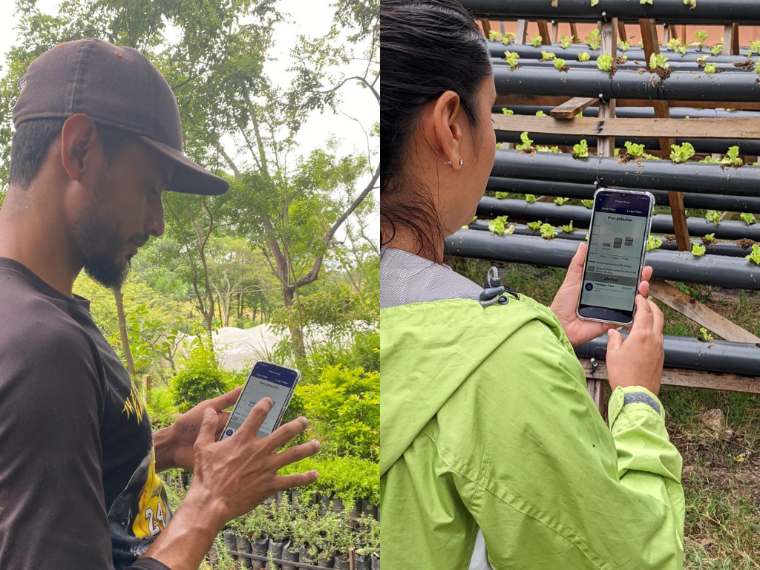
New App is collaboratively designed to support Nicaraguan farmers in preparing for climate change
For smallholder farmers in northern Nicaragua, drought or extreme rain can spell significant crop losses, and there is widespread concern about both types of extremes becoming more likely under climate change. But while farmers have come to expect that the climate is in the process of changing, what weighs more immediately on their minds is what climate conditions the next growing season will bring. Most farmers in this area cultivate a limited number of small fields nestled in the rolling hills enveloped by forests. Yet the lushness of the vegetation is deceptive - the region is part of the Central American Dry Corridor, where a dry season can stretch six months or more. The timing and amount of rain are critical for the communities that depend entirely on rain for watering fields, and use rain-fed springs for their water supply sources. While Nicaraguan farmers cultivate areas and crops susceptible to warming, flooding, or drought, they often lack access to real-time climate forecasting. Knowledge on what lies ahead supports the decision making process when it comes to choosing between investing in either seeds and other agricultural inputs or the necessities to weather an extreme climate event.
For about 7 years, Santa Clara University (SCU) professors Iris Stewart-Frey (Environmental Studies and Sciences) and Ed Maurer (Civil, Environmental, and Sustainable Engineering), both members of the Environmental Justice and the Common Good Initiative on campus, have been working with https://www.asdenic.org/, a development organization that promotes the social and economic development of rural communities and urban settlements in northern Nicaragua. Their work has centered on questions of climate change and water security and has involved analyzing past and future climate changes affecting the region to help communities plan ahead. But whenever they presented their findings to farmers during workshops, one question kept cropping up: What is the weather going to be like in the next growing season and how do we prepare for it?
So the SCU researchers and ASDENIC’s Director, Raul Diaz, joined forces with SCU’s Frugal Innovation Hub (FIH) on campus to develop a new climate app. This app will bring state-of-the art short-term and seasonal climate forecasts to the community scale. The process has been collaborative across country and disciplinary boundaries: Maurer and Stewart-Frey have worked with engineering undergraduates Turner Avila and Alex Avila on climate data processing, and with ESS student Paola Felix on an associated survey. FIH Director of Programs and Partnerships, Allan Báez Morales tapped FIH graduate students Giulliano Silva Zanotti Siviero and Abhilash Harish Srivathsa with developing the backend of the app. The group met regularly throughout the academic year, consulting with ASDENIC’s director Raul Diaz on each step via video call, and discussing each process, design and best way of communicating the data.

The new app will provide short term rain forecasts and inform the user how those forecasts compare to what would normally be expected. A message system can warn of dangers such as flash flooding. Forecasts of several months give an outlook on the likelihood of wetter or drier than normal conditions that can help to prepare for drought or plantings. In addition, a social impact assessment will generate and analyze data regarding the impact of the climate forecasting information on user’s health, risk reduction/preparedness especially with respect to food production and water resources, improving education and a knowledge base, time allocation, income generation, community institutions regarding climate preparedness, and increased agency.
Currently a pre-launch assessment on water security is conducted by ASDENIC-trained youth in northern Nicaragua. The team expects the app to be launched this fall, followed by a user-evaluation and social impact assessment. Longer term, more features could be added or the app could be expanded to other regions. This collaboration has been made possible through funding by both the Center for Food Innovation and Entrepreneurship and the Miller Center at Santa Clara University.